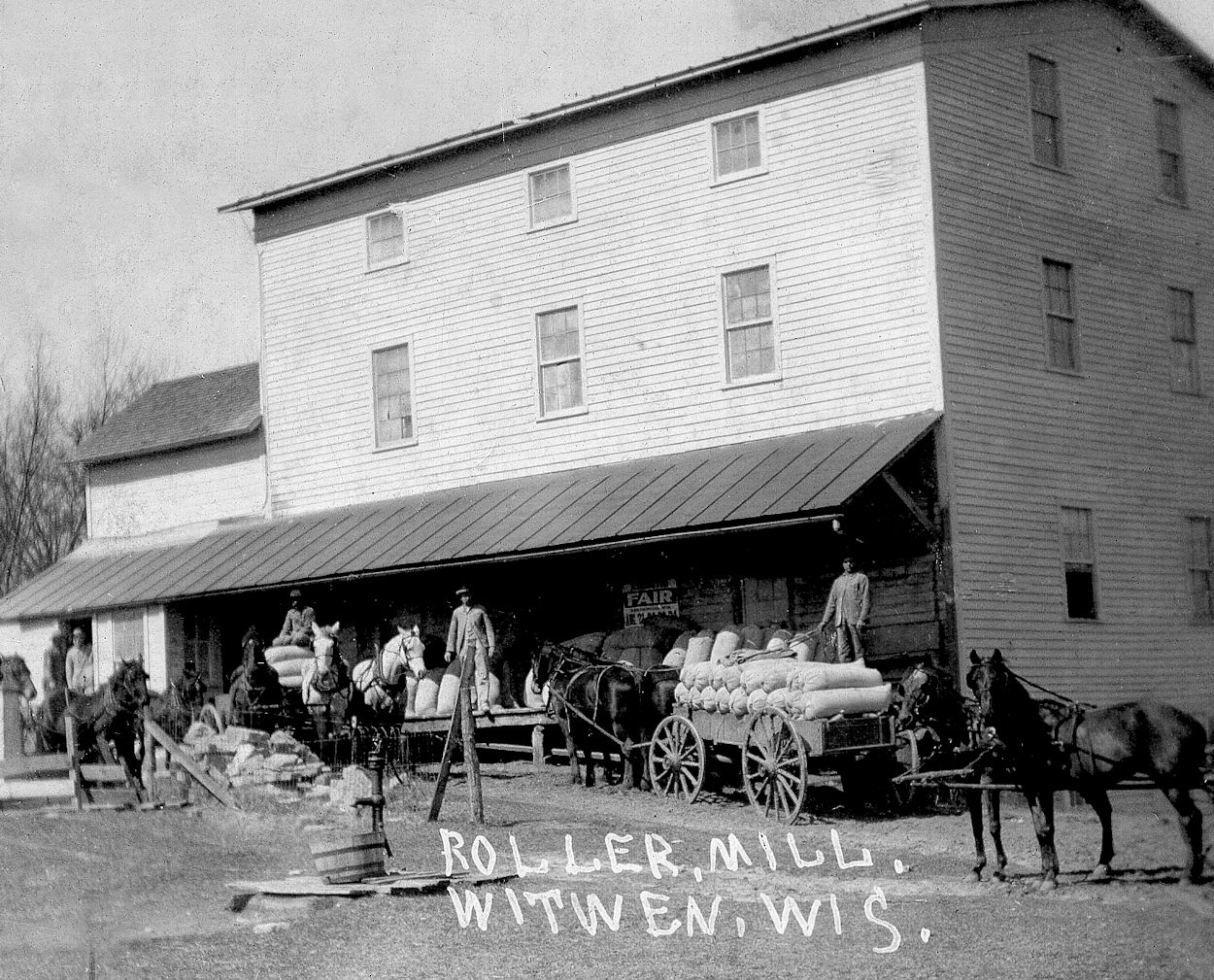Witwen
The village of Witwen is situated in the Town of Troy, on County Highway E. It was named after one of the first settlers in the area, Gaudenz Witwen, who built a log cabin and settled in the area in 1856.
Other family members soon arrived, and the Witwen brothers built a feed and flour mill on a diverted branch of Honey Creek. They dammed the stream which formed a mill pond to provide power for their new enterprise. During the winter, the pond was a ready source for ice, used to refrigerate perishables during hot summer months.
These early settlers were not without access to the outside world, as a daily stage delivered mail from Sauk City. Witwen received its own postoffice in 1892. The post office building was a recycled schoolhouse, which also served as the village’s first general store, providing the community with groceries and dry goods.
It eventually became to small for the increasing trade, and was replaced by a larger edifice. The second floor served as a community hall, which provided a space for political rallies, debates, school programs and oyster stew suppers. The building also housed what was described as a "second-rate" eatery, serving the same daily menu: cheese, crackers, sardines, and bologna, with a glass of clear well water on the side.
As with other "frontier" towns, the tiny village of Witwen soon had a blacksmith shop, catering to farmer’s needs. Jim Conoly was its first smithy.
Dairy farmers also needed a local station where they could bring their milk, and in 1895, a creamery was established in the growing village.
A tabernacle, built in 1918, catered to the religious needs of the surrounding community. It was built on an old Native American campground, where Indians trapped muskrat during the spring and fall. Originally organized as the Sauk county Camp Meeting Association, and later known as the Camp Witwen Association, the first meetings were held in a tent, which was loaned to them by the Ringling Brothers Circus. The tabernacle, which still exists, had a dining area and rooms upstairs to accommodate worshipers for the two-week meetings.
The Native American trappers were welcomed by the millers, as the muskrats did considerable damage to their dam and mill pond. A bounty of 10 cents per animal was paid by the owners of the mill. The Indian women also wove baskets and sold them to the local community.
The Witwen creamery eventually became a cooperative – the Troy & Honey Creek Creamery Co-op – and later was bought out and closed by the Sauk City plant. With the demise of the creamery, Witwen lost an important economic commodity, and the once thriving community, ceased to attract new enterprises.
Today, Witwen once again comes alive during its annual 4th of July celebration, which draws large crowds from surrounding communities, and one year, a national television crew even showed up. A patriotic parade of local high school bands and homemade floats is followed by a chicken barbeque in the park.
(Information for this article was obtained from the publication, "Honey Creek Hamlets".)


